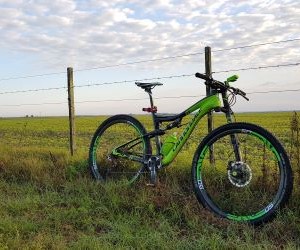Learn how to deal with punctures on long rides with prevention tips, repair techniques, and smart gear choices to keep rolling without stress.
HOW DO I CYCLE SAFELY ON ICE OR SNOW?
Cycling on ice or snow can be both thrilling and risky. Whether you’re commuting in a winter city or training in the backcountry, cold-weather riding demands specialized techniques, the right equipment, and a focus on traction and control. In this guide, we’ll explore how to prepare your bike, choose the best winter gear, and ride with confidence when roads are slick and visibility is low. Stay upright, stay warm, and enjoy riding all year round—even in snow.

Essential gear for winter riding
When cycling on ice or snow, the right gear can make or break your ride. Cold temps and slippery surfaces require both functional and safety-focused upgrades—from tire selection to body insulation.
What your bike and body need to stay safe
Start with tires. Studded tires are the gold standard for icy roads, offering bite and traction even on black ice. If you're navigating mixed conditions, wide tires with low PSI add grip and float over slush or powder. Consider using a winter-specific bike or a beater bike with fenders and sealed cables to reduce maintenance needs.
For your body, layers are key. A windproof outer shell, thermal gloves, and waterproof boots help keep extremities functioning. Don’t forget clear or amber-lens goggles for snowy or low-light visibility, and invest in a thermal helmet liner or a winter-specific cycling cap to prevent heat loss from your head.
Studded tires – Crucial for icy roads
Layered clothing – Base, mid, and shell for thermal balance
Bar mitts – Keep hands warm without bulky gloves
Bike fenders – Minimize slush spray and ice buildup
Bright lights – Boost visibility during dark winter commutes
Gear up like it’s a tactical mission—because it is. Every piece of winter cycling equipment contributes to your control, comfort, and confidence on challenging terrain.
Techniques for riding on snow and ice
No matter how well-equipped you are, technique is what keeps you rubber-side down. Winter cycling demands smooth, calculated movements and a high level of focus—there’s little room for sudden changes or distractions.
Ride smarter, not harder
First rule: slow everything down. Brake gently, steer with your hips, and coast through corners. Sudden movements—especially braking or sharp turns—are common causes of falls. Always look ahead for icy patches and plan routes that avoid hills, shaded roads, or known slick zones.
Keep your weight balanced and slightly rearward to avoid sliding. On climbs, stay seated to maintain traction. Use lower gears and pedal with a smooth cadence to prevent wheel spin. Descents require full attention: feather your brakes and use both front and rear evenly.
Brake early and lightly—avoid skids
Keep upper body relaxed to absorb terrain feedback
Ride seated when climbing for rear-wheel grip
Avoid sudden inputs—steer and shift gradually
Scan ahead for ice, ruts, or black patches
With practice, winter riding becomes intuitive. You'll learn how your tires respond, where grip is lost, and how to adjust on the fly. Confidence grows with each cold-weather mile—so long as you respect the road conditions.
Planning, recovery, and staying safe
Beyond technique and gear, winter cycling is about preparation. Planning your route, monitoring the weather, and building in recovery time help you ride safely and enjoyably even in subzero conditions.
Ride smarter before and after you pedal
Check weather apps before heading out—not just for snow forecasts, but wind chill and daylight windows. Let someone know your route and expected return. Carry an emergency kit including a space blanket, multitool, tire levers, and extra gloves. Keep your phone warm in an inner pocket so it doesn't shut down in the cold.
After your ride, prioritize recovery. Cold riding taxes the immune system and tightens muscles. Get out of wet clothes fast, refuel with warm nutrition, and use foam rolling or hot baths to restore muscle function. Make rest days a bigger priority during the winter to prevent burnout.
Always check local conditions and sunrise/sunset times
Carry spares, hand warmers, and a power bank
Let someone track your ride via app
Recover with heat, hydration, and mobility work
Limit rides below -15°C unless fully experienced
Riding in winter can be epic, but safety comes first. With a smart approach, you’ll not only survive snow rides—you’ll start to love them. Just remember: ride prepared, ride alert, and ride within your limits.
YOU MAY ALSO BE INTERESTED






